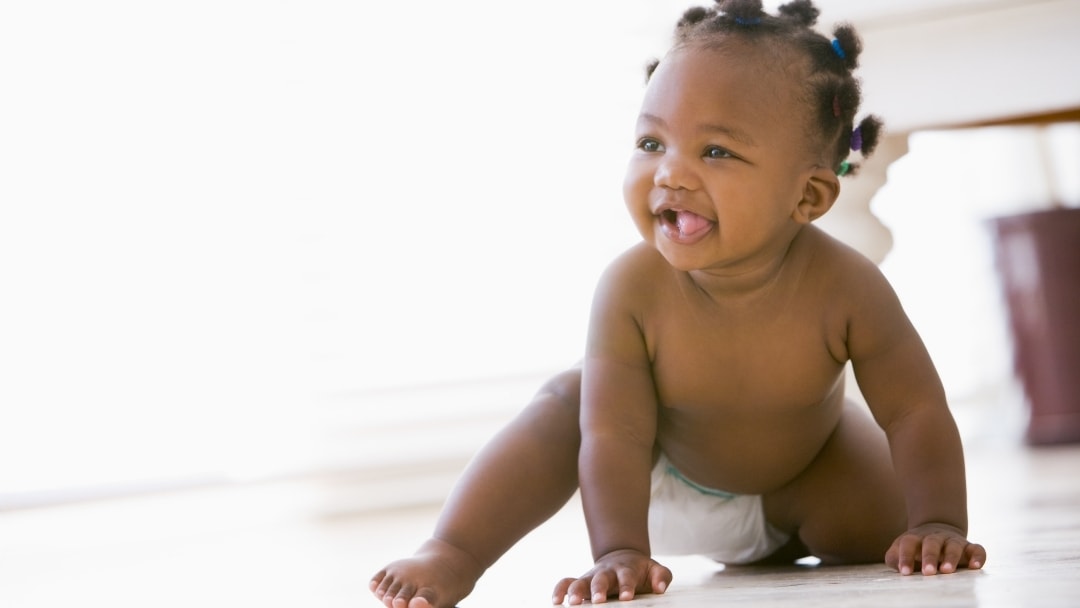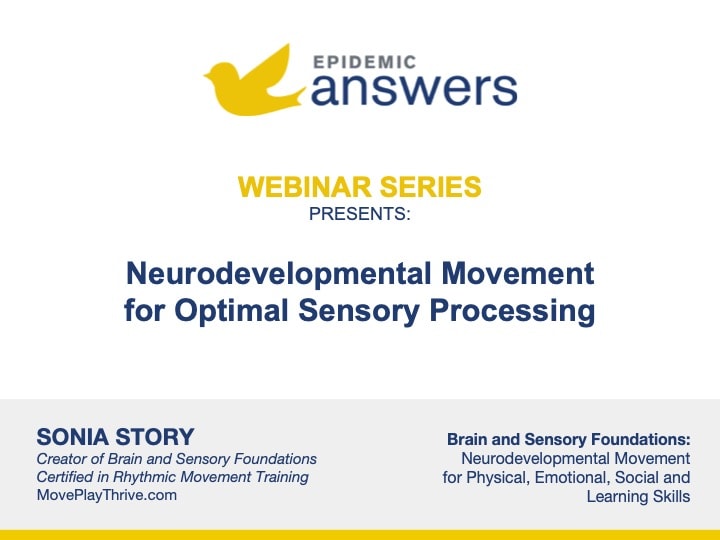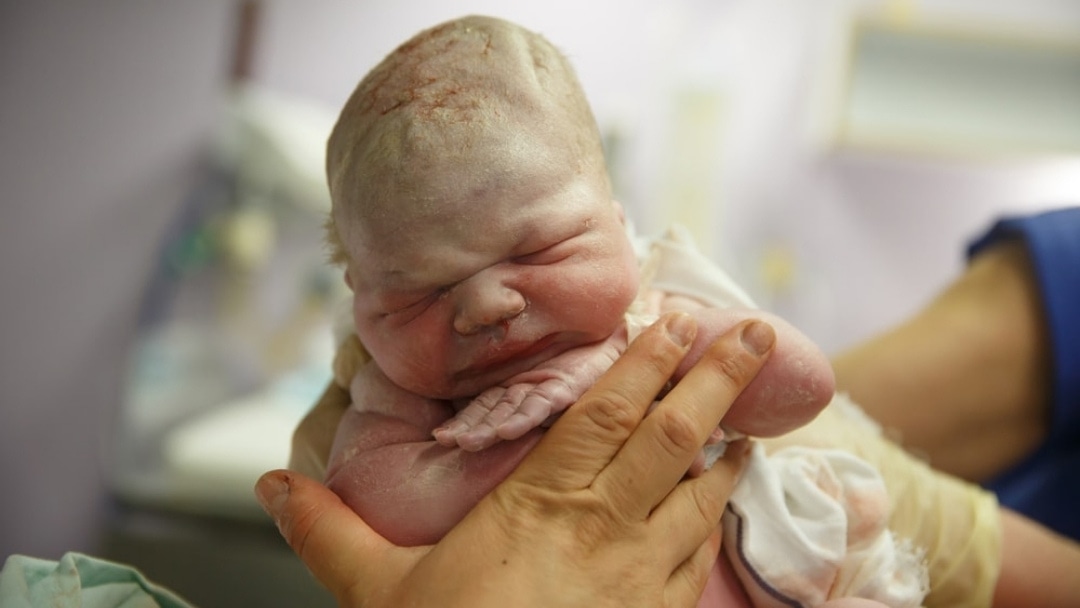We interviewed Sargent Goodchild about developmental movement for neurological reorganization. You can watch the replay below.
What Is Developmental Movement?
Developmental movement entails the crawling, creeping and other foundational brain-based movements from infancy that help wire a baby’s body and brain together. Movement drives the growth of the brain and nervous system.
Children who lack these movements often have an underdeveloped, immature neuro-sensory-motor system. Without these movements, a child’s brain may have gaps in, or problems with, sensory processing, attention, focus, vision, speech, coordination, muscle tone, balance and more. They will also likely have had developmental delays.
Most children with neurodevelopmental disorders such as autism, ADHD, Sensory Processing Disorder and learning disabilities are more likely to be missing developmental movement.
What Is Neurological Reorganization?
Neurological reorganization is a movement-based therapy that targets foundational areas of the brain to organize and integrate functions not addressed by other interventions. Both children and adults can benefit from neurological reorganization.
This type of therapy uses a prescribed set of repetitive movements to remap your child’s neural pathways. Just as traffic is rerouted around damaged sections of road, neurological reorganization strengthens existing neural pathways around damaged or underdeveloped parts of the brain. This allows your child’s brain to continue developing naturally – without surgery or pharmaceuticals – as it was intended to.
This therapy can help fill the gaps and resolve challenges mentioned above in children and adults with:
- Neurodevelopmental disorders
- Cerebral palsy
- Anxiety
- Traumatic brain injury
- Fetal Alcohol Spectrum Disorder
- Obsessive Compulsive Disorder
- Oppositional Defiance Disorder
- Post Traumatic Stress Disorder
- Reaction Attachment Disorder
- Stroke
In This Webinar
In this webinar, Sarge Goodchild helped us to answer the following questions:
- Why are movements necessary for the development of a baby’s brain?
- What is the optimal developmental timeline of a baby’s brain and body?
- Is there a window of opportunity for implementing developmental movement? Can this be used for adults, too?
- What are some red flags related to a baby’s development that could indicate a problem?
- Are children who have developmental delays more like to have autism, ADHD, Sensory Processing Disorder, learning disabilities or other health and developmental challenges?
- What is developmental movement?
- What is neurological reorganization?
- How is neurological reorganization different from rhythmic movement and reflex integration therapies or does it also include these?
Please note that you will be asked to provide your email address at the 30-minute mark to continue viewing the replay.
Resources Mentioned in This Webinar
Birth Trauma and Devlopmental Delays
Goodchild, Sargent. Neurological Reorganization for Brain Injury: The Relationship of Structure and Function with Therapeutic Applications. The Autism File USA, 35, 2010.
The Ontogeny of Human Neurologic Brain Functions. Sandler & Brown, 1980 Second ed.
Tongue Tie and Its Effect on the Whole Body, Growth and Development Webinar Replay
About Sargent Goodchild
Sargent began his life as a brain-injured child. At four years of age, Sargent was diagnosed with a seizure disorder. None of the professionals who met Sargent were capable of seeing his potential. Instead, they saw a severely epileptic child with a dismal future.
The best medical advice his parents were given was to put him on anticonvulsant and muscle-relaxing medication. Yet, the seven medications that he was taking were not controlling the seizures, and he was too toxic for his parents to bear.
Sargents’ parents chose another route due to their deep love and understanding as well as the glimmers of potential he expressed at home, but never in the doctor’s office.

They wanted him to be well and were not limited by academic knowledge, rather positively motivated by parental love. They went outside the medical community and found hope for Sargent’s future. Their faith, hope and determination saved the life of their son, a life that would have otherwise been devastated by the prescription medications he was taking.
Sargent’s life experiences speak of the success of this program: He graduated with honors from a respected university, was a highly ranked wrestler, cross-country runner and a professional mountain biker. He has bicycled across the United States and Canada and has done extensive offshore offshore sailing.
He is happily married, a father, and both founder and executive director of Active Healing, Inc. His goal in life is to give every child, especially those who are developmentally challenged, the opportunity to reach their optimal physical and intellectual potential. You can found out more about him at this website ActiveHealing.org
Disclaimer
This webinar is not a substitute for medical advice, treatment, diagnosis, or consultation with a medical professional. It is intended for general informational purposes only and should not be relied on to make determinations related to treatment of a medical condition. Epidemic Answers has not verified and does not guaranty the accuracy of the information provided in this webinar.
Still Looking for Answers?
Visit the Epidemic Answers Practitioner Directory to find a practitioner near you.
Join us inside our online membership community for parents, Healing Together, where you’ll find even more healing resources, expert guidance, and a community to support you every step of your child’s healing journey.
Sources & References
Amos, P. Rhythm and timing in autism: learning to dance. Front Integr Neurosci. 2013 Apr 19;7:27.
Barnhill, E. Neural connectivity, music, and movement: a response to Pat Amos. Front Integr Neurosci. 2013 Apr 24;7:29.
Cho, H., et al. Effects of Action Observation Training with Auditory Stimulation on Static and Dynamic Balance in Chronic Stroke Patients. J Stroke Cerebrovasc Dis. 2020 May;29(5):104775.
Fields, R.D. Myelination: an overlooked mechanism of synaptic plasticity? Neuroscientist. 2005 Dec;11(6):528-31.
Grigg, T.M., et al. Retained primitive reflexes: Perceptions of parents who have used Rhythmic Movement Training with their children. J Child Health Care. 2018 Sep;22(3):406-418.
Grzywniak, C. Integration exercise programme for children with learning difficulties who have preserved vestigial primitive reflexes. Acta Neuropsychologica. 2017;15(3).
Hardy, M.W., et al. Rhythm, movement, and autism: using rhythmic rehabilitation research as a model for autism. Front Integr Neurosci. 2013 Mar 28;7:19.
Herbert, J., et al. Crawling is associated with more flexible memory retrieval by 9-month-old infants. Dev Sci. 2007 Mar;10(2):183-9.
Hong, H.J., et al. Effect of Rhythmic Movement Program to Improve Walking Ability for Elderly Patients with Stroke. Indian Journal of Science and Technology. 2016 Jul;9(26).
Iverson, J.M. Developing language in a developing body: the relationship between motor development and language development. J Child Lang. 2010 Mar;37(2):229-61.
Jordan-Black, J. The effects of the Primary Movement programme on the academic performance of children attending ordinary primary school. Journal of Research in Special Educational Needs. 2005 Nov;5(3):101 – 111.
Kadivar, Z., et al. Effect of step training and rhythmic auditory stimulation on functional performance in Parkinson patients. Neurorehabil Neural Repair. 2011 Sep;25(7):626-35.
Ladányi, K. et al. Is atypical rhythm a risk factor for developmental speech and language disorders? Wiley Interdiscip Rev Cogn Sci. 2020 Sep;11(5):e1528.
Lakatos, P., et al. A New Unifying Account of the Roles of Neuronal Entrainment. Curr Biol. 2019 Sep 23;29(18):R890-R905.
McWhirter, K., et al. The association between learning disorders, motor function, and primitive reflexes in pre-school children: A systematic review. J Child Health Care. 2022 Jul 13;13674935221114187.
Melillo, R., et al. Persistent Childhood Primitive Reflex Reduction Effects on Cognitive, Sensorimotor, and Academic Performance in ADHD. Front Public Health. 2020 Nov 17;8:431835.
Nilsson, M., et al. Enriched environment and astrocytes in central nervous system regeneration. J Rehabil Med. 2007 May;39(5):345-52.
Suh, J.H., et al. Effect of rhythmic auditory stimulation on gait and balance in hemiplegic stroke patients. NeuroRehabilitation. 2014;34(1):193-9.
Van Hirtum, T., et al. Is atypical rhythm a riskfactor for developmental speech and language disorders? J Assoc Res Otolaryngol. 2021 Jul;22(4):465-480.
Winkler, I., et al. Newborn infants detect the beat in music. Proc Natl Acad Sci U S A. 2009 Feb 17;106(7):2468-71.
Zaigham, M., et al. Prelabour caesarean section and neurodevelopmental outcome at 4 and 12 months of age: an observational study. BMC Pregnancy and Childbirth. 2020 (20)564.
Zentner, M., et al. Rhythmic engagement with music in infancy. Proc Natl Acad Sci U S A. 2010 Mar 30;107(13):5768-73.
Resources
Articles
Goodchild, Sargent. Neurological Reorganization for Brain Injury: The Relationship of Structure and Function with Therapeutic Applications. The Autism File USA, 35, 2010.
The Ontogeny of Human Neurologic Brain Functions. Sandler & Brown, 1980 Second ed.
Books
Blomberg MD, Harald and Dempsey, Moira. Movements That Heal, Rhythmic Movement Training and Primitive Reflex Integration. Independenly published, 2011.
Brandes, Bonnie. The Symphony of Reflexes: Interventions for Human Development, Autism, ADHD, CP, and Other Neurological Disorders. CreateSpace Independent Publishing Platform, 2016.
Goddard Blythe, Sally. The Well Balanced Child: Movement and Early Learning. Hawthorn Press, 2005.
Goddard, Sally. Reflexes, Learning and Behavior, A Window Into the Child’s Mind. Fern Ridge Press, 2005.
Hunter, Ian. Brain Injury: Tapping the Potential Within Treatment and Progress Through Stimulation, Movement and Love. Ashgrove Pr Ltd, 1986.
Stockman, Ida. Movement and Action in Learning and Development: Clinical Implications for Pervasive Developmental Disorders. Academic Press; 1st edition, 2004.
Websites
Balance Brain Achievement Centers
Institute for Neuro-Physiological Psychology
My Child Will Thrive: Primitive Reflexes Cheat Sheet



